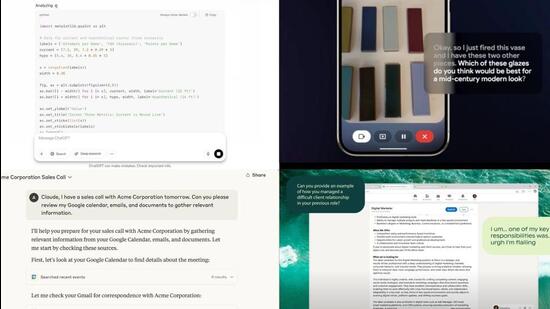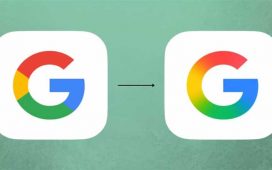Google is simply freeing up the agenda for what I expect will be extensive artificial intelligence (AI) conversations next week at this year’s I/O keynote. But of course, the developer conference has traditionally been the anchor for Android updates over the years, and this year will be no different. The only change in approach being, Google is detailing some of the important Android points of conversation, in advance. My favourite among the many (yes, there are a bunch of significant steps forward), are measures that make Android phones even less palatable for thieves (damn you, dishonourable people!).

- Google confirms that later in the year, Android will add further reinforcement to Factory Reset protections, which will restrict all functionalities on devices that have been forcibly reset without the owner’s authorisation.
- The owner of a stolen phone will also have more control via the Remote Lock feature, and added to the mix will be a security challenge question, helping to prevent unauthorised actions that a thief may be attempting.
- Any stolen Android phone that runs Android 16, will prevent one-time passwords (this is relevant, you’ll often receive 2-factor authentication codes on SMS) received on a phone that’s no longer with the rightful owner, from being displayed on the Lock Screen notifications. They will only be accessible, after the phone is unlocked by the owner.
There’s a lot more on the agenda for Android, Gemini and cross platform updates. The most visible would be the interface changes that are incoming with the next version of Android. It as four years ago, when Google last gave Android a coat of paint, and these changes as part of the ‘Material 3 Expressive’ design language, will focus on improvements such as fluidity and flexibility, rather than changing the identity of Android as millions around the world know it. Familiarity won’t be lost, if that is what you’re worried about.
Gemini is making its way into vehicles with Android Auto and even those smarter cars that have Google Built-in, as will smart TVs that find a basis in the Google TV OS, earbuds from Samsung and Sony, as well as the Wear OS platform that underlines watches from Google and OnePlus, to name a few.
Last week on Wired Wisdom: AI and apps frontier, Promate’s unique TripMate-GaN160 adapter, and jobs
TECH SPOTLIGHT: WaterField Design’s Tech Folio Tank Backpack
Every once in a while, a genuinely interesting take on backpacks comes along. There have been a few that deserved a conversation in recent years, but one that’s remained a loyal travel partner almost a decade is the Aer (another San Francisco based backpack maker) Fit Pack 2. It still holds up very well, with reassuring spaciousness. After a while, there is one we must chat about — the WaterField Designs’ $419 (that’s around ₹35,400) Tech Folio Tank Backpack. Could this take over from the Aer backpack for upcoming travels? Perhaps, and there are reasons why it may.
You may not want to walk around with a heavy load on your back every day, but when you do need to, a backpack that is in sync with this demand, is a prized asset. The Tech Folio Tank Backpack has a 30-litre capacity, and it is not just a large compartment with a handful of pockets thrown in for good measure — there are as many as 11 pockets or segments (I may still have missed one or two) for everything from pens to wireless earbuds, trackers, and power banks. The visual cues don’t immediately betray as such, but the SFBags Tech Folio Tank Backpack can hold mammoth 18-inch laptops. Lucky day — I had a 17.3-inch laptop at hand to check, and that fit very easily. In fact, there are two of these padded sleeves, the other being for an up to 13-inch laptop or tablet.
The compartmentalisation is a crucial, winning detail. The tech folio compartment, as the larger one is called, has the full-length zip for a lie-flat position (this may be relevant when passing through airport security, for instance). The front pocket has an easy access magnetic opening. There is genuine smartness that underlines WaterField Designs’ efforts with the Tech Folio Tank Backpack. Unlike ‘smart’ backpacks we have seen in recent years, which would call themselves that, by adding a separate compartment for a power bank. Important to talk about the high-quality materials as well. The variant I’m reviewing here is a mix of the full-grain leather with ballistic nylon. The latter, in particular stands out, because it’s the material with which bulletproof vests are made. The SFBags Tech Folio Tank Backpack isn’t expected to take a bullet for you, but it is as bulletproof as smart backpacks get.
WHAT’S ON MY MIND

Where does Apple go from here? The words of Eddie Cue, Apple’s senior vice president of services, during the testimony as part of Google’s antitrust hearing, does make one sit up and take notice. “We’re highly successful — that doesn’t mean we’re going to be around 10 or 20 years down the line. People still are going to need toothpaste 20 years from now, 40 years from now. You may not need an iPhone 10 years from now, as crazy as that sounds.” While one cannot discount posturing to illustrate the lack of a monopoly for Apple or Google, this does highlight a question about the long-term vision. We’re are at a moment in time when tech innovation is taking longer leaps than it has for most of the previous decade, if we are to count back from today. At the same time, global tech companies are equally (if not more) nimble. The triple whammy would be, they’re innovating quickly too. Take for example, Huawei’s built an entire ecosystem without Google. Many didn’t expect it to. And also made a trifold foldable smartphone, while at it.
Apple needs to re-find that pace of innovation which it was known for. Perhaps even as far back as 8 years or so ago, when we saw the iPhone X mark a new chapter for the iPhone. The spark is very much there. You may have heard a conversation about Apple’s intention to build smart glasses, the kind that’d compete with the Ray-Ban Meta glasses — that should appeal to a much wider demographic, that the virtual reality headset ever would. And of course, Apple may need a foldable iPhone at some point — more than anything else, to prove a point. Apple Intelligence still has gaps that need plugging, and that couldn’t happen fast enough (unfortunately, that will be a test of patience).
VOICE OF REASON

A few days ago, OpenAI explained what went wrong with the late-April update for GPT‑4o in ChatGPT, “that made the model noticeably more sycophantic”. The change, since rolled back to an earlier version of the model, reverts to responses that will have better balance. Here are a few things that stood out in the AI company’s explanation of what went wrong, and what’s next.
- In the April 25th model update, there were “candidate improvements to better incorporate user feedback, memory, and fresher data, among others.” The early assessment was that each of these changes, which they say looked beneficial individually, could have collectively played a part in bubbling sycophancy to the surface, when combined.
- They believe these changes weakened the influence of the primary reward signal, which had been holding sycophancy in check. “User feedback in particular can sometimes favour more agreeable responses, likely amplifying the shift we saw. We have also seen that in some cases, user memory contributes to exacerbating the effects of sycophancy”.
- ”While we’ve had discussions about risks related to sycophancy in GPT‑4o for a while, sycophancy wasn’t explicitly flagged as part of our internal hands-on testing, as some of our expert testers were more concerned about the change in the model’s tone and style.”
- OpenAI says they went ahead with the release of the model due to positive feedback from users who tried it, even though some testers had indicated that the model behaviour “felt” slightly off.
- “Unfortunately, this was the wrong call. We build these models for our users and while user feedback is critical to our decisions, it’s ultimately our responsibility to interpret that feedback correctly.”
OpenAI says they are reworking approvals for model behaviour before release, one that’ll explicitly approve both quantitative and qualitative signals. There will also be more weightage for spot checks and interactive testing to check model behaviour and consistency. “While we have extensive evals in areas like instruction hierarchy and safety (e.g. privacy, disallowed content), we’re working to improve our confidence in areas we’re not already accounting for.” Thats where the updated Model Spec will play a critical role.








